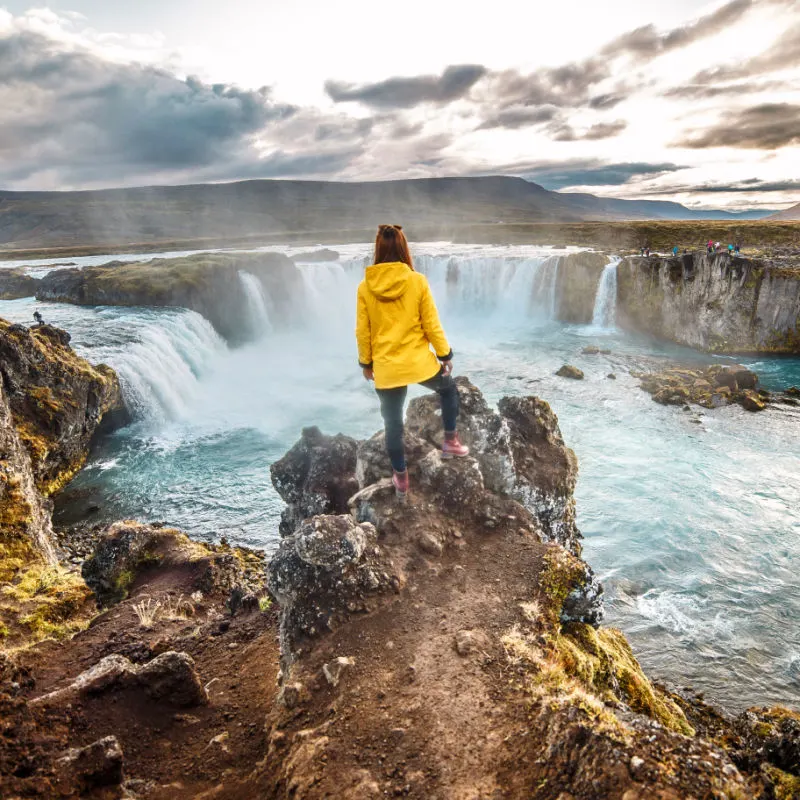Share the article
Last updated
Iceland is a bucket list destination that has seen an increase in tourism recently, and although most people go in the summer, it’s actually now, in the months of October and November, that the best time to visit this epic country.
October and November are the best months to see the Northern Lights in Iceland as the weather is cold, but not nearly as cold as the later months.
It’s also a great time because crowds are smaller and prices lower, meaning it’s easy to book tours and accommodation.
Flight deals can be found and traveling to Iceland from both the UK and US can be cheap and easy.
@seasonjereis October is the perfect time to go there as there are much fewer people, but you can also see the Northern Lights 🥹 #Iceland #Northern Lights #Northern Lights #trip #October #wishlist #topdestination ♬ golden hour – JVKE
Here’s why now is the best time to visit Iceland:
1. Ideal weather
Iceland has recently received a record number of tourists, especially in the summer season. But many don’t know that the country is beautiful during the months of October and November and the days can be filled with sunshine and mild weather.
October can be considered the wettest month, although it is usually just a steady drizzle, making the moody atmosphere even more magical. The average temperature in October is around 37 – 45 degrees, so bundling up is necessary, but remember to dress in layers, and this island usually experiences multiple seasons in one day.
The weather in November can be characterized as cold, dark and wet, which could certainly put any traveler off the idea. But actually, many seasoned travelers will tell you that this isn’t a bad time to visit, because all you have to do is layer up and plan ahead, and you can experience some epic landscapes that are virtually crowd-free.
@asasteinars My Iceland road trip in November 🥹🙏 #Iceland #Vanleven ♬ Sleep on the Floor by The Lumineers – mnd.chill
2. Less crowds
As mentioned, Iceland has been popular with travelers lately, which is why record crowds are making a trip to this epic island. It’s considered one of the safest and most favorite places for solo travelers, and of course there can be some crowds at the better-known attractions.
In the late autumn months of October and November, the majority of visitors have gone home and the winter adventure seekers have not yet arrived, meaning you’ll have more space at the famous waterfalls, glaciers, black beaches and lagoons to yourself.

3. Lower prices
Iceland’s high season is summer, and of course visiting during this time will fetch quite high prices. Let’s face it: Iceland is known around the world as a very expensive destination, and that applies all year round.
Despite high prices across the board, the later fall months are a good time to go if you’re trying to save some money. Car rental, accommodation, tours and other big expenses are known to have lower prices at the moment, not to mention the great flight deals that can be found from both the US and the UK.
@trip.com Send this to your best friends and remind them to visit Iceland in November ❄️Cr: @aureliestory@tylerwayneglass IG@dannytaze@wetravelmiles #restiktk #Iceland #fyp #wishlist ♬ оригинальный звук – zotov
4. Natural beauty
Iceland is a beautiful destination in all weather, and in summer, winter, autumn and spring visitors can enjoy the natural views as they evolve through the seasons.
The months of October and November offer a chance to see the rugged and varied landscape in a new light, with famous sights such as the waterfalls of Dettifoss and Godafoss with their icy cascading waters.
The black sand beaches seem to take on new life as the icy waters crash against the shore, and snow-capped mountains and glittering glaciers take over the landscape as the weather turns colder.

5. Lots of activities
Visiting Iceland is all about the tours, and visiting in October (and early November) means you can take advantage of both the summer and winter offerings.
The days are still filled with enough light hours for you to enjoy many of the famous sights, and the evenings are dark enough to spot the Northern Lights.
Glacier tours, horse riding, winter sports and lagoon lounging are all popular at this time of year, not to mention it’s the best time for whale watching as they are migrating at this time of year are.
Please note that self-driving can be a bit unpredictable during these months as the cold rain and fog can make road conditions difficult. So make sure you plan this ahead.

6. Spotting the Aurora
Iceland is known as one of the most famous places in the world for catching the Northern Lights, and the months of October and November offer a great time to do this.
It’s not nearly as cold and crowded as it will be later in the winter, which means tours and sites won’t be as crowded, and the weather will be cold, but not unbearable as it will soon become.
The clouds are typically less dense at this time of year than in the winter months, providing clear skies and great viewing. Don’t forget to check the Aurora forecast before heading out to avoid disappointment.

Read more:
Top 5 Travel Insurance Plans for 2023 from $10 per week
How to easily earn points for free travel

SUBSCRIBE TO OUR LATEST POSTS
Enter your email address to subscribe to the latest Travel Off Path breaking travel news, delivered straight to your inbox.
This article originally appeared on TravelOffPath.com




